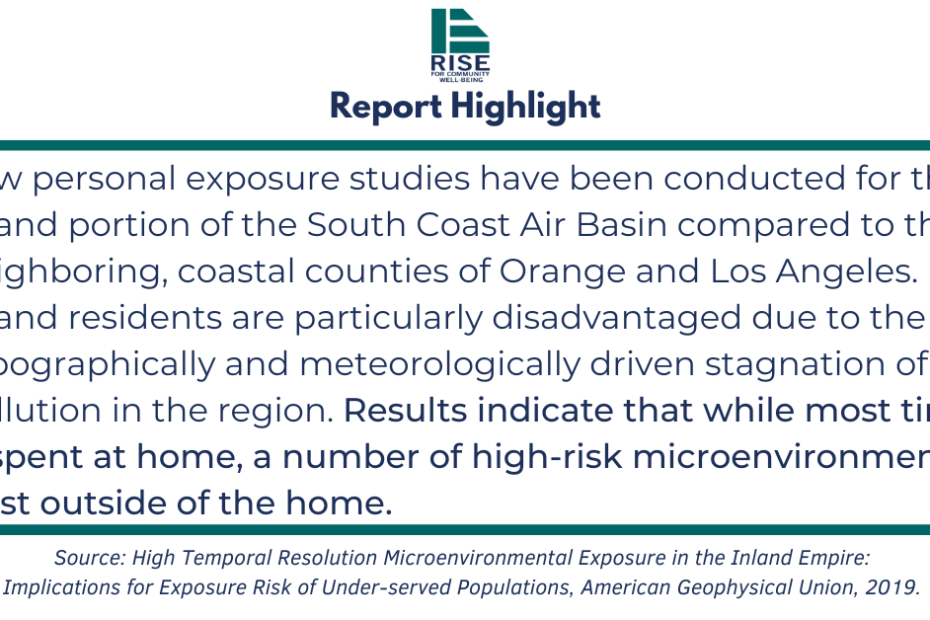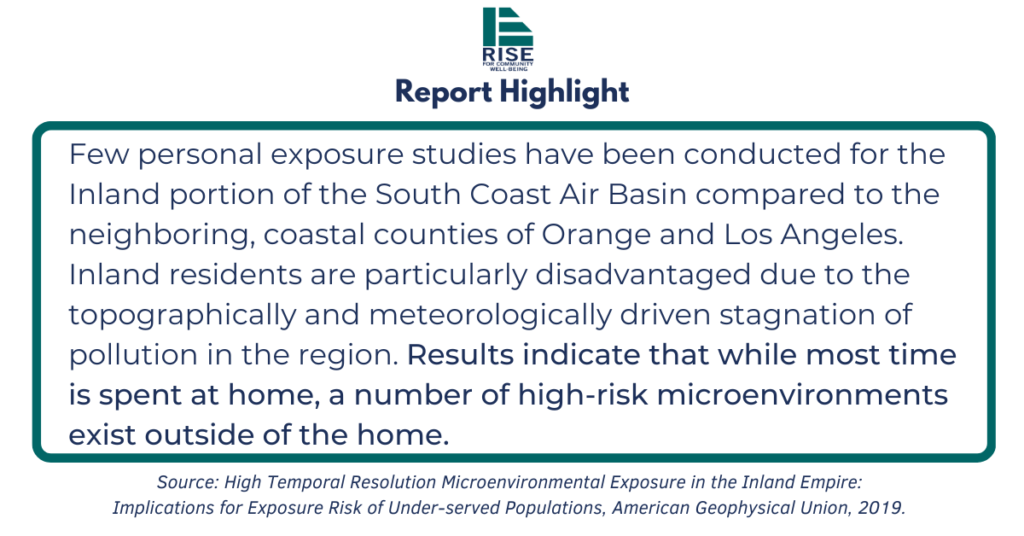High Temporal Resolution Microenvironmental Exposure in the Inland Empire: Implications for Exposure Risk of Under-served Populations
Authors: Cesunica Elizabeth Ivey, Khanh Do, and Heather Smith
Publication: American Geophysical Union, Fall Meeting 2019
Date: December 2019
Few personal exposure studies have been conducted for the Inland portion of the South Coast Air Basin compared to the neighboring, coastal counties of Orange and Los Angeles. Inland residents are particularly disadvantaged due to the topographically and meteorologically driven stagnation of pollution in the region. Here we examine personal PM2.5 exposure measurements collected over 5 weeks for 17 residents of Inland Southern California, which in recent years has experienced a reversal in improvement of ambient air quality despite strict emissions regulations. Measurements were collected every 15 seconds using low-cost optical particle counters and were uploaded to a cloud-based server in real-time. We also measured position every 5 seconds using GPS data loggers for detailed location tracking. We seek to understand the extent to which personal exposure varies by residential location and time spent throughout the day. We classify microenvironments by seven categories, including home, work/university, transient, restaurant, retail, leisure indoor, and leisure outdoor. Results indicate that while most time is spent at home, a number of high-risk microenvironments exist outside of the home. Our results have great implications for the design of effective personal exposure mitigation strategies for Inland Southern California residents.

